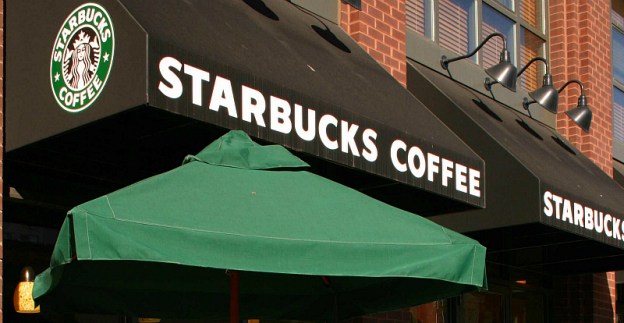
Wireless charging your electronics hasn’t become popular yet, partially because wireless charging tech is only starting to work well and partially because there’s been a long-running battle in the wireless charging industry, between the Power Matters Alliance (PMA) and Wireless Power Consortium (WPC). Each of these groups wants to own the ‘standard’ way to wirelessly charge a phone or tablet. Thanks to a deal with Starbucks, the PMA believes it has a leg up.
Daniel Schreiber, president of Powermat, and PMA board member, told The Verge today that he believes the race is drawing to a close, as Starbucks has begun to test out PMA charging stations in Boston. He’s also expecting the company’s adoption of the stations to be “expanded significantly in the coming months.”
Schreiber feels that this will be the end of the war with WPC, even as the group’s Qi standard continues to be adopted by new phones. “Standards are ultimately set in a coffee shop, not in a conference room,” Schreiber said. To illustrate his point, he made a parallel to the wireless war between Wi-Fi and HomeRF, all the way back in 2001. Schreiber cited Starbucks’ endorsement of Wi-Fi in 2002 as one of the primary reasons we’ve never caught ourselves looking for a HomeRF station.
European company Powerkiss recently migrated to PMA from the WPC, and is set to provide 1,000 McDonald’s locations across the continent with PMA-approved wireless charging stations. The Coffee Bean and Tea Leaf also recently jumped ship from WPC, and will both be trying stations out in California this quarter, with international plans likely to follow.
An MIT spinoff called WiTricity, also announced today that it will be joining the PMA. It’s currently working on more distanced wireless charging. WiTricity’s technology works through tuned electromagnetic resonators to charge devices. If such technology were perfected, whatever device you had on you could potentially start charging the second you walk into any location that had it. And of course, the same would go for everyone at that location with you. While it might not be there just yet, Eric Giler, WiTricity’s CEO, says that the technology is ready, and has been for a while. It was just waiting on a reliable standard.
According to Giler, WiTricity actually approached the Wireless Power Consortium about a partnership, but the WPC shot down the idea. The company remained on the fence for some time, but when AT&T took a seat on the PMA board, that convinced WiTricity to join the Power Matters Alliance.
Still, as much as PMA is bragging, no winner is set in stone for this war, and while it’s true that Starbucks’ trial run of the PMA-approved charging stations bodes well for the group, it’s nowhere near as aggressive its adoption of Wi-Fi over HomeRF back in 2002. The public may be ready for wireless device charging, but we’re not ready to pick a winner just yet.


